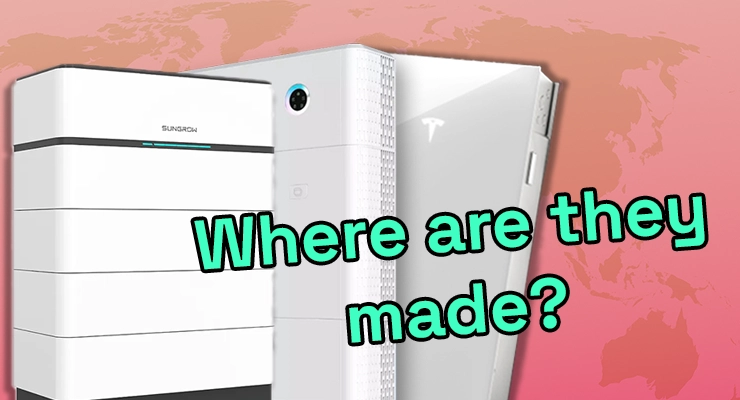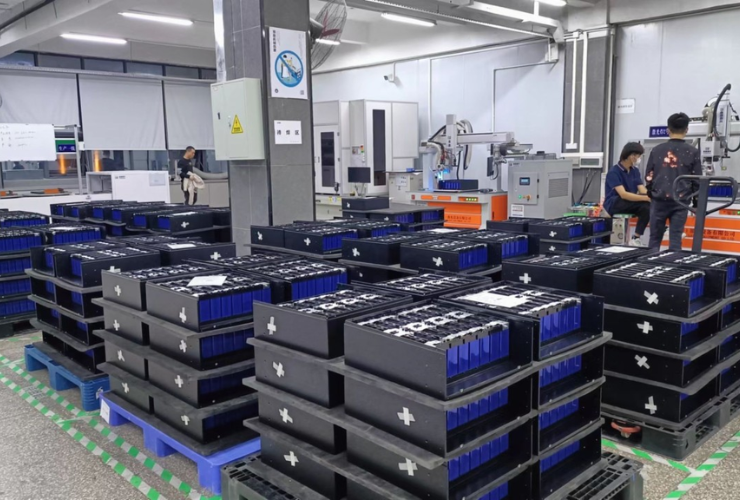Fast read
The vast majority of home batteries available to Australians are manufactured in China, which dominates the global production of lithium-ion cells and complete battery systems. Some well-known brands like Tesla manufacture their batteries in the USA, and there is a small but growing number of companies assembling batteries in Australia. However, even non-Chinese brands often rely on critical components and battery cells sourced from China.
Is Your Solar Battery Made in China?
As Australian households increasingly turn to solar batteries to manage energy costs and improve self-sufficiency, a common and important question arises: where do these complex pieces of technology actually come from? Understanding the origin of your battery can provide insight into its quality, the technology behind it, and the supply chain that delivers it to your home.
The short answer is that the global battery manufacturing landscape is heavily concentrated in one region, but the story has some important nuances.
The dominant force in battery manufacturing
If you trace the supply chain back to its source, you’ll find that the overwhelming majority of home batteries, and the crucial lithium-ion cells inside them, are made in China. The country has established a commanding lead in the renewable energy technology sector through massive investment in research, development, and manufacturing capacity.
This dominance extends across the entire production process, from processing the raw materials to producing the individual battery cells and assembling the final, complex battery units that get installed in homes. Companies like Sungrow, a major player in both the solar inverter and battery markets, have their headquarters and primary manufacturing hubs in China. Other rapidly growing brands popular in Australia, such as Sigenergy, also operate state-of-the-art manufacturing facilities in China. In fact, many of the top-ranked solar battery companies globally are Chinese firms.
This concentration means that even for brands not headquartered in China, there is a high likelihood that the core components, particularly the battery cells, originated there.
Are there any batteries made outside of China?
Yes, while China is the largest producer, there are notable exceptions and other significant manufacturing hubs for home batteries sold in Australia.
United States: One of the most prominent examples is Tesla, which manufactures its popular Powerwall batteries at its Gigafactory in Nevada, USA. Enphase, another well-regarded brand, has also been increasing its manufacturing footprint in the United States, with facilities in South Carolina and Texas producing its IQ Batteries. However, it’s important to note that even these US-based operations may source their individual battery cells from international suppliers, including those in China.
South Korea: Previously, Israeli company SolarEdge operated a significant battery cell manufacturing facility in South Korea called Sella 2. However, in late 2024, SolarEdge announced it was closing its energy storage division, which includes shuttering the Sella 2 factory and selling its assets to focus on its core solar business. The company has stated that this decision affects its utility-scale battery manufacturing but that it will continue to sell residential and commercial battery solutions.
Europe: Some European brands also have a presence. For instance, German-based company Sonnen assembles batteries in Germany.
What about Australian-made batteries?
While Australia does not currently have the large-scale cell manufacturing capacity of China or the US, there is a growing local assembly industry. A handful of companies are building battery systems on Australian soil, often tailoring them for local conditions.
Sonnen, the German company, operates a production facility in Adelaide, South Australia, where it assembles home battery systems. This was a significant development for local manufacturing, spurred by state government incentives. It’s worth noting, however, that the company’s newest product for the Australian market, the sonnenBatterie Evo, is initially manufactured at its headquarters in Germany. The Adelaide facility continues to be a manufacturing hub for other products serving Australia and the Asia Pacific region. Other companies like RedEarth, EVO Power, and PowerPlus Energy also design and build battery systems in Australia, focusing on providing robust solutions for the Australian climate and offering local support. These companies often source high-quality components from overseas while completing the critical final assembly, quality control, and testing in Australia.
Why does manufacturing location matter?
Understanding where your battery is made can be important for a few key reasons:
- Quality and Expertise: Regions with a long history and high volume of production, like China, have developed immense expertise and sophisticated, automated manufacturing processes. Similarly, companies like Tesla and Sonnen who invest in their own dedicated facilities maintain tight control over quality.
- Supply Chain Resilience: A heavy reliance on a single geographic region for manufacturing can make the global supply chain vulnerable to disruptions. Having manufacturing diversity in the US, Europe, and Australia helps create a more stable and resilient market for consumers.
- Local Support and Innovation: Australian-based assemblers can offer direct, local technical support and may design products specifically to withstand harsh Australian conditions. Supporting these companies also helps to build a local renewable energy industry.
When choosing a battery, the manufacturing origin is one piece of a larger puzzle. It’s a factor to consider alongside the battery’s chemistry (like Lithium Iron Phosphate – LFP, known for its safety), warranty, the reputation of the brand, and the quality of your local installer. By weighing all these elements, you can make a confident decision that best suits your home’s energy needs for years to come.




